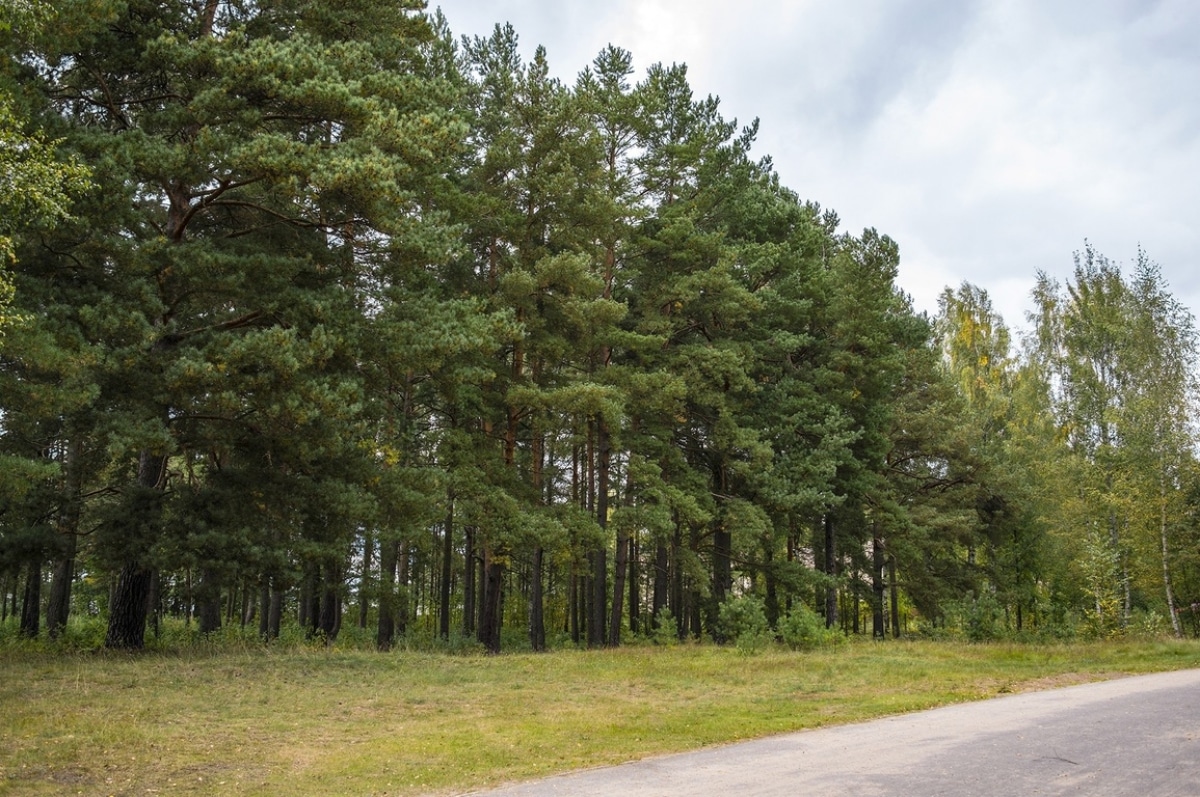
Pines are conifers that tend to grow very fast, and can also be used as windbreak hedges or to protect the privacy of the site. While it is true that their roots tend to grow several meters away from the trunk, they are plants that look great in a garden.
In addition, there are many types of pines. Some varieties have even been obtained with a low bearing, ideal for beautifying small plots.
The Pine trees They are evergreen conifers found practically all over the world. Their trunks tend to twist as the years go by, and their crown is almost always rounded but somewhat irregular. They belong to the genus Pinus, of which we highlight the following species:
Pinus canariensis
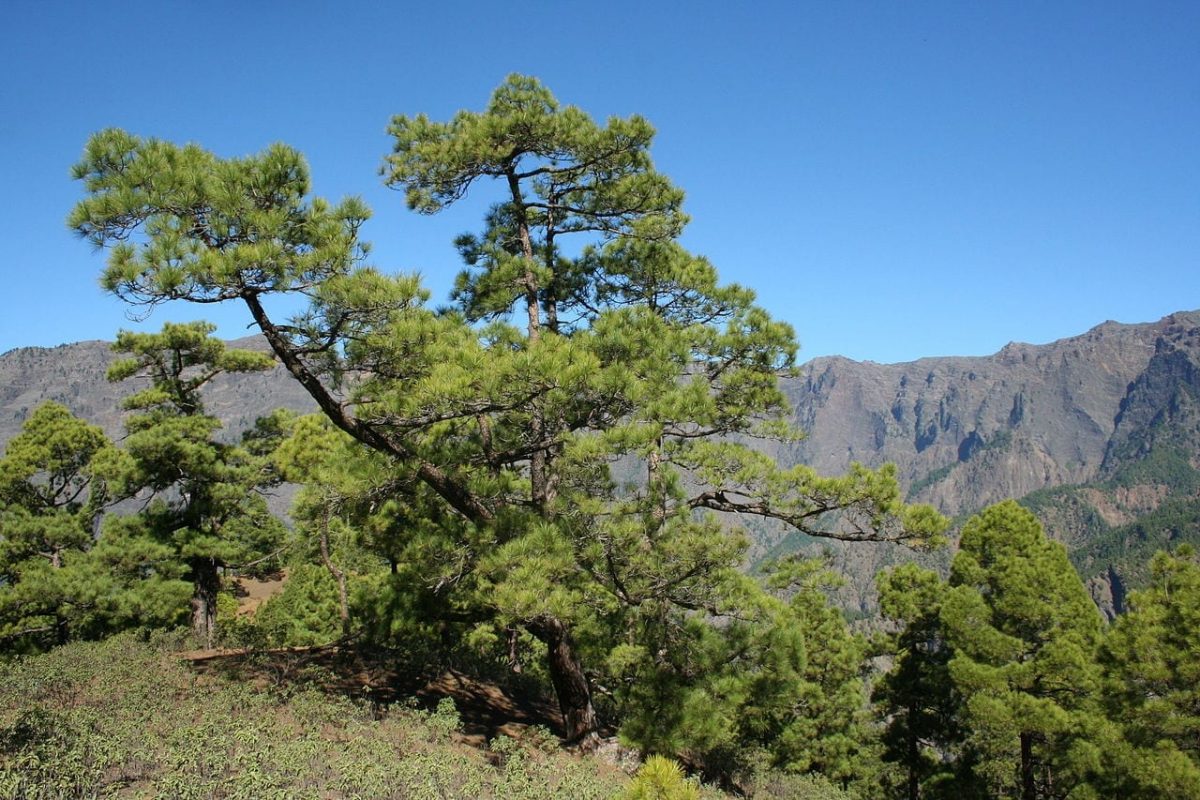
Pinus canariensis - Image - Wikimedia / Victor R. Ruiz from Arinaga, Canary Islands, Spain
El canary pine it is natural, as its name suggests, from the Canary Islands. It is a tree that reaches 40 meters in height, and that develops a trunk up to 2,5 meters in diameter whose bark is light brown in color. The leaves are, like those of the rest of pines, acicular, and are between 20 and 30 centimeters long.
Pinus cembra
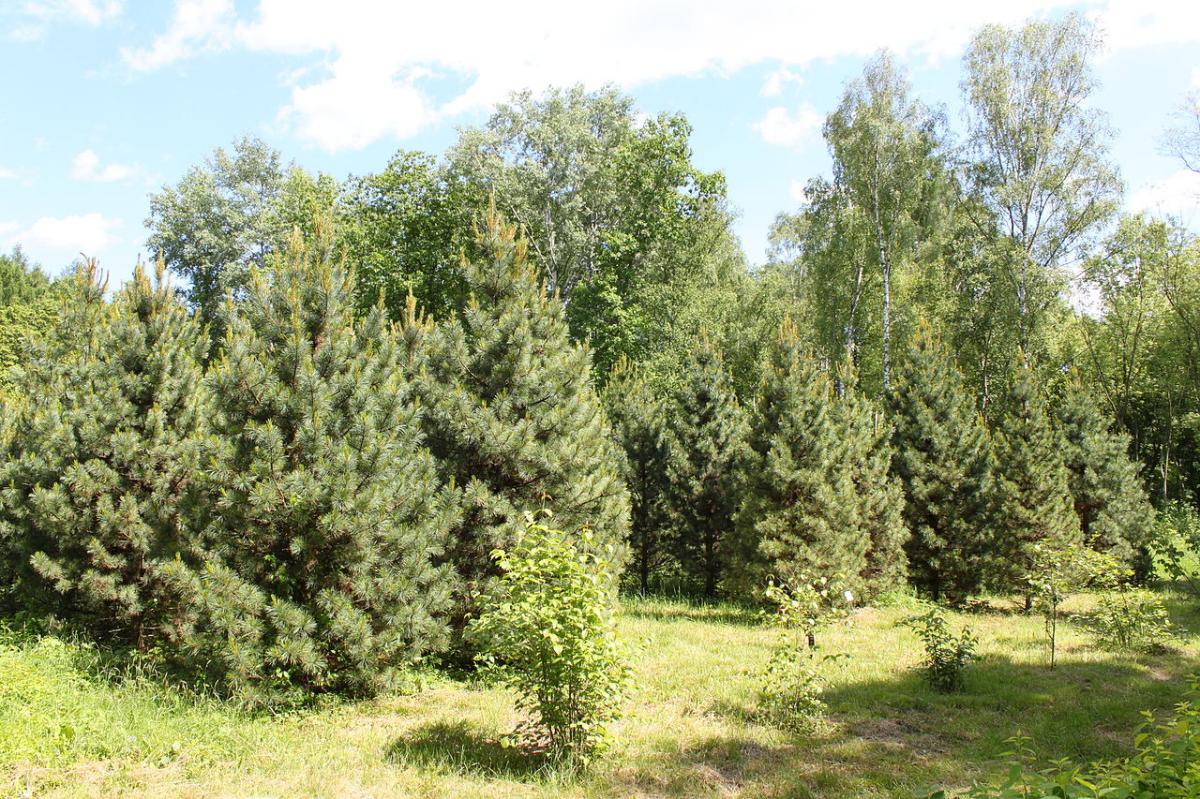
Image - Wikimedia / Crusier
El stone pine, known as cembra pine or simply cembro, it is an evergreen tree up to 25 meters high a native of Central Europe. It is typical of this species to have needles grouped by 5 in its brachiblast (which would be the branch, from which they sprout). As a curiosity, you should know that it maintains a very special relationship with the common nutcracker, since it is he who is in charge, without knowing it, of dispersing its seeds by taking them away from the mother plant and by burying them at different points.
propagating through a pine forest (Pinus halepensis).
El Aleppo pine It is a type of pine that grows in the Mediterranean region, where it is even found on the beaches. Reaches 25 meters in height, and presents a tortuous trunk with whitish gray bark and an irregular crown. The needles are grouped two by two and are very flexible.
Pinus mugo
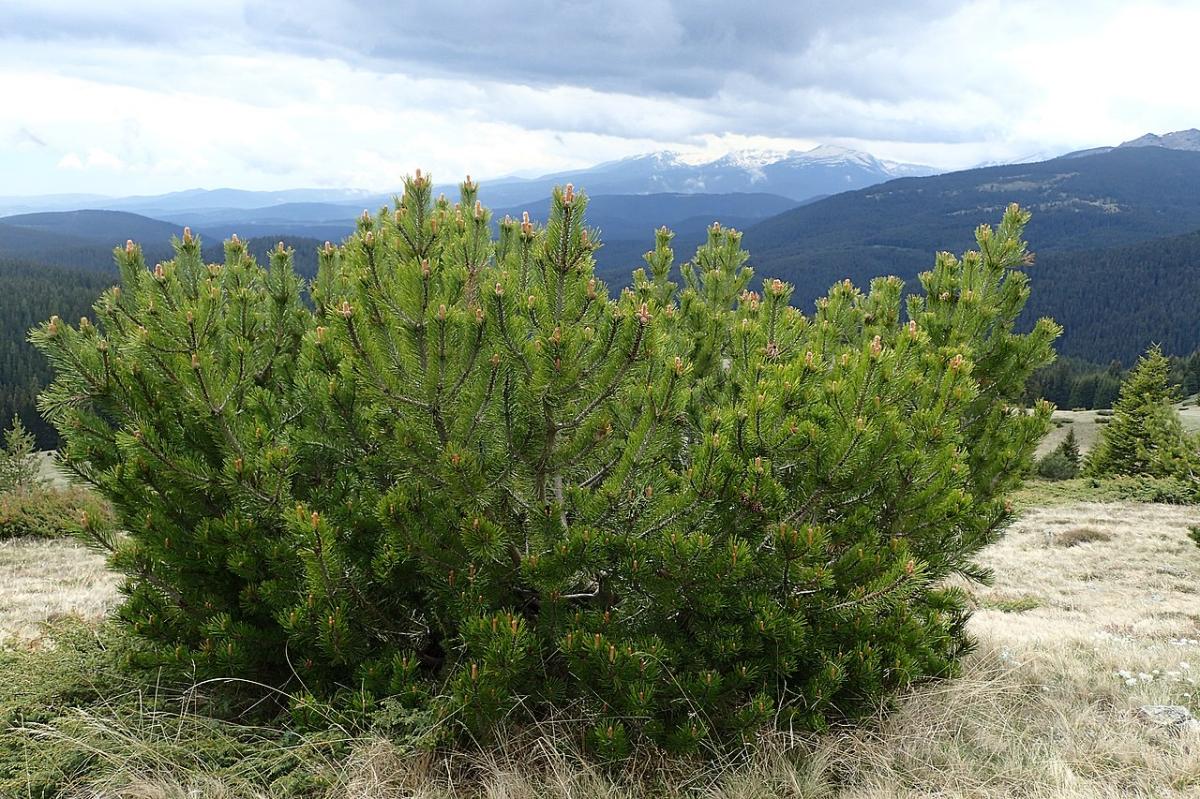
Image - Wikimedia / Krzysztof Ziarnek, Kenraiz
El mountain pine It is typical of Central Europe, where it grows in the high mountains at an altitude of between 1500 and 2500 meters. Reaches a height of 20 meters, and develops a thick and somewhat tortuous trunk with a rounded crown. Its needles are green, very strong and sharp.
Pinus nigra
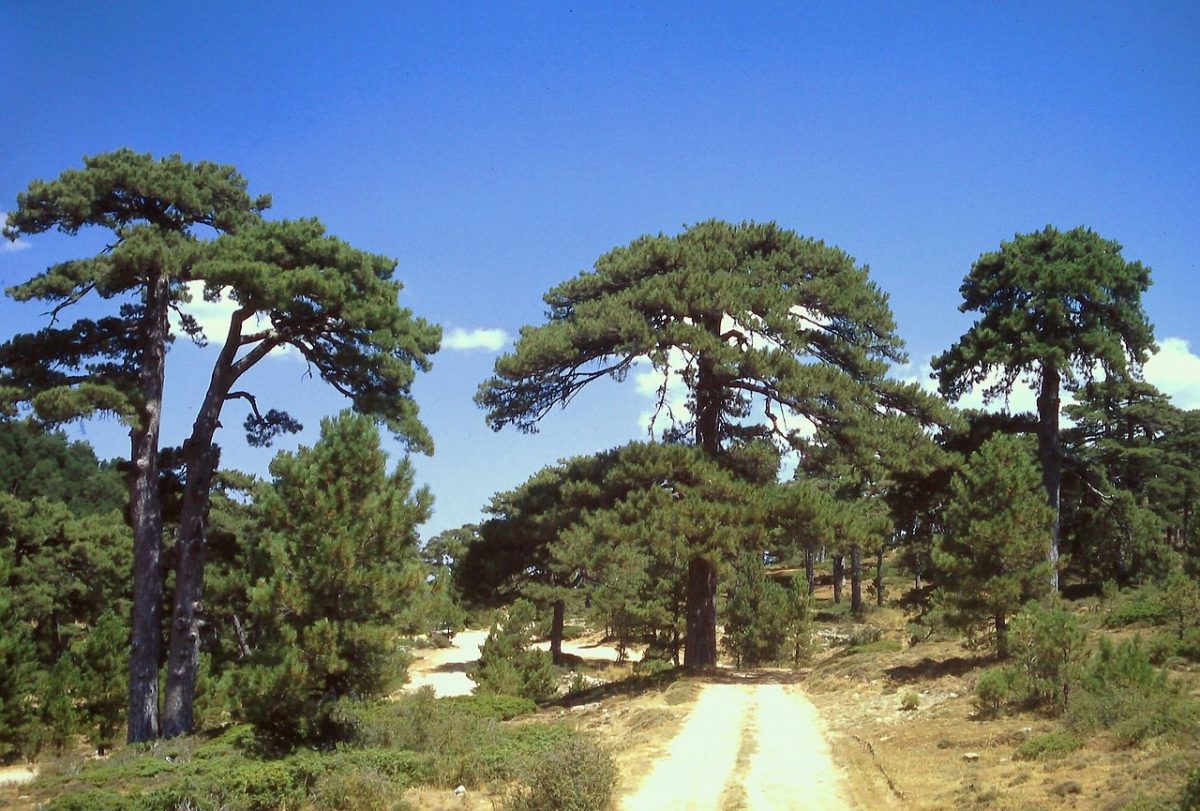
Image - Wikimedia / Jclopezalmansa
El black pine or Salgareño pine as it is also called, it is a species native to southern Europe, reaching Spain, and is also found in North Africa and Asia Minor. It grows between 20 and 55 meters in height, and has a trunk with a brownish-gray or dark gray bark. The needles are dark green in color, and are 8 to 20 centimeters long.
Pinus nigra subsp. salzmannii
It is the subspecies that grows in Spain, especially in the eastern half of the Iberian Peninsula, and in northwestern Africa. The main differences are that it's something smaller (measures up to 40 meters high) and resists drought better than the type species. Of course, in Andalusia it is on the Red List of endangered species.
Pinus pinaster
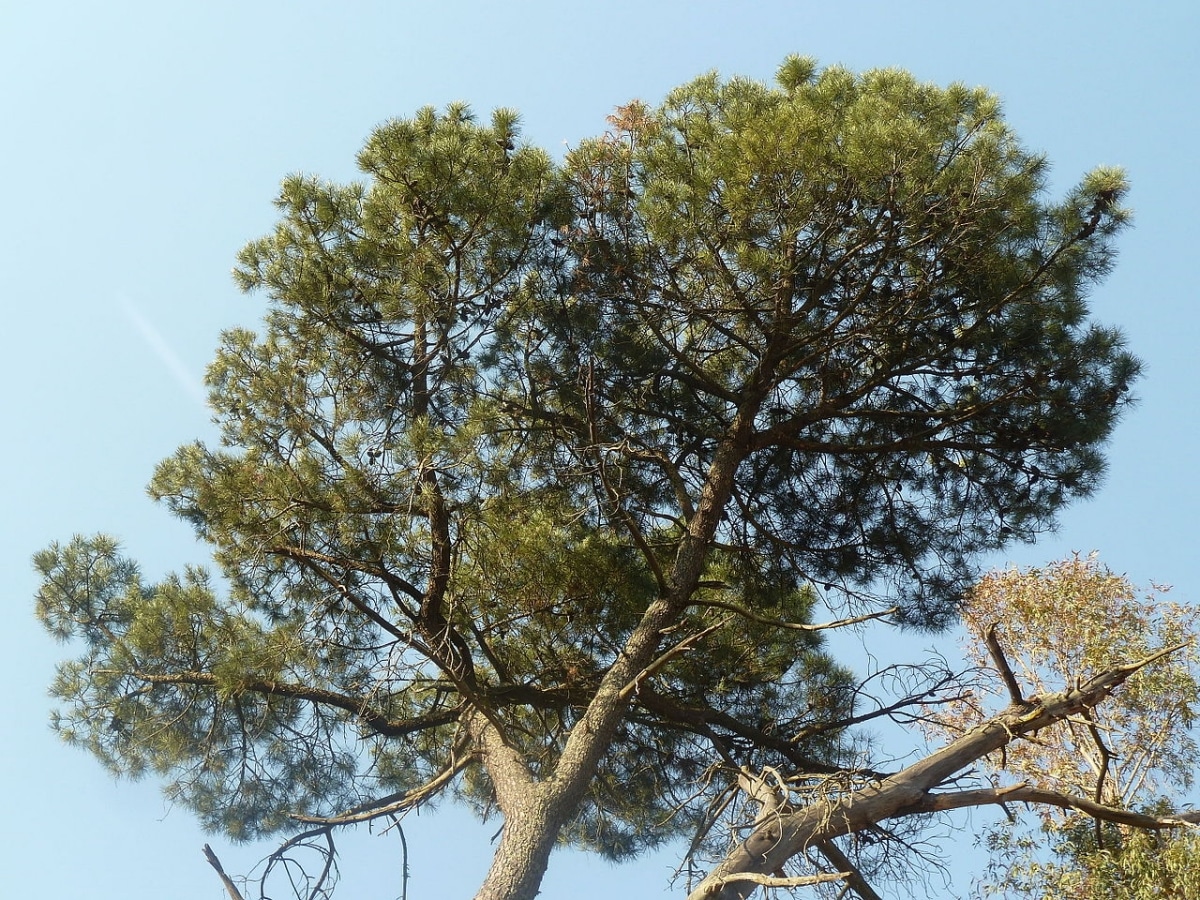
Image - Wikimedia / JMK
El maritime pine It is a species native to southern Europe, and North Africa that grows between 20 and 35 meters in height, with a trunk up to 1,2 meters in diameter. The rind is orange-red in color, and its crown is open and irregular. The needles are grouped two by two, and are between 10 and 22 centimeters long.
Pinea pine
Is stone pine. Originally from the Mediterranean region, reaches a maximum height of 50 meters or more, being the normal 12 meters, with a straight and thick trunk whose bark is orange-brown. Their needles are up to 20 centimeters long, and sprout from branches that are often arranged in a parasol.
Pinus ponderosa
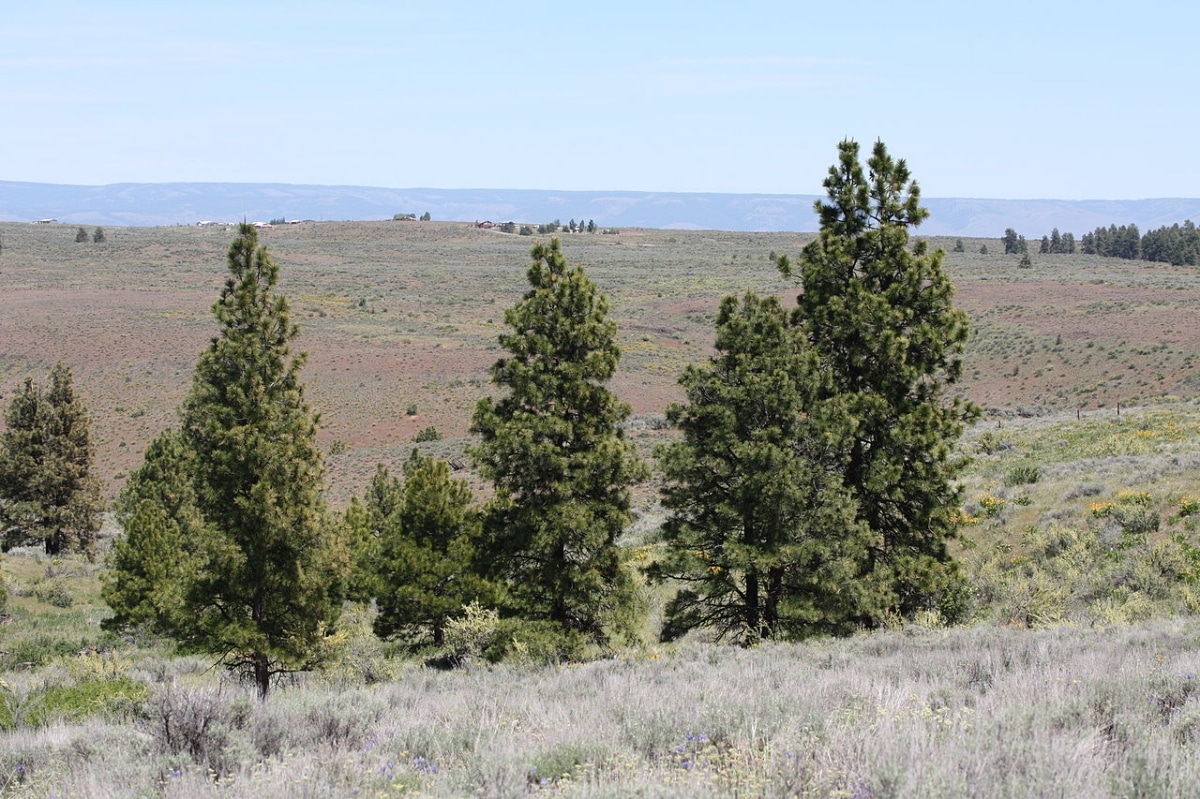
Image - Wikimedia / Walter Siegmund
It is known as ponderoso pine or American royal pine, and it is a conifer native to the eastern United States. It grows between 40 and 70 meters in height at most, and can have between 2 and 3 needles for each brachiblast. The bark is brown, and its needles are about 15 centimeters long.
Pinus radiata
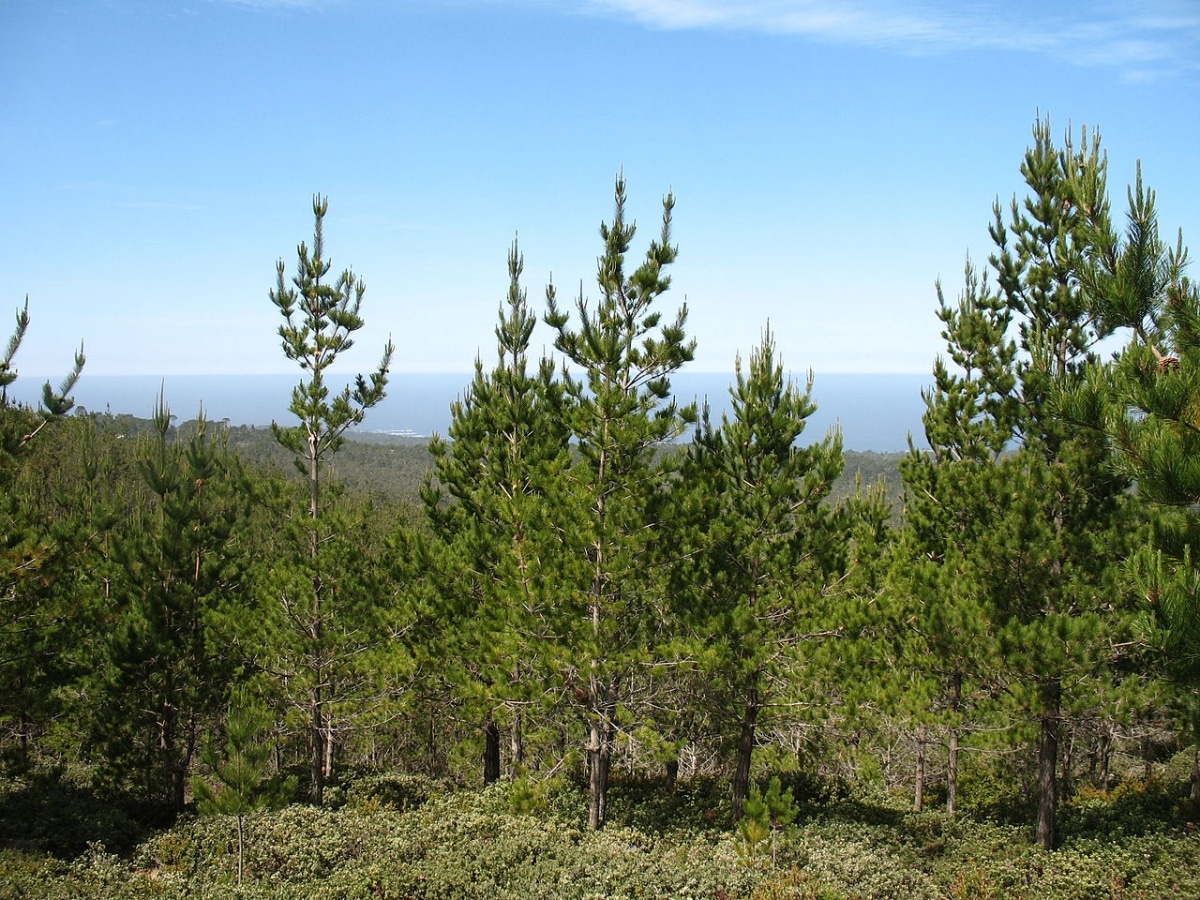
Image - Wikimedia / RyanGWU82
El Monterrey pine, also known as the California pine, is a conifer that grows in the southwestern United States. Reaches a height of 45 meters, and its trunk is straight with a reddish-brown bark. Their needles are 15 centimeters long, and are green or bluish-green in color.
(Pinus sylvestris)
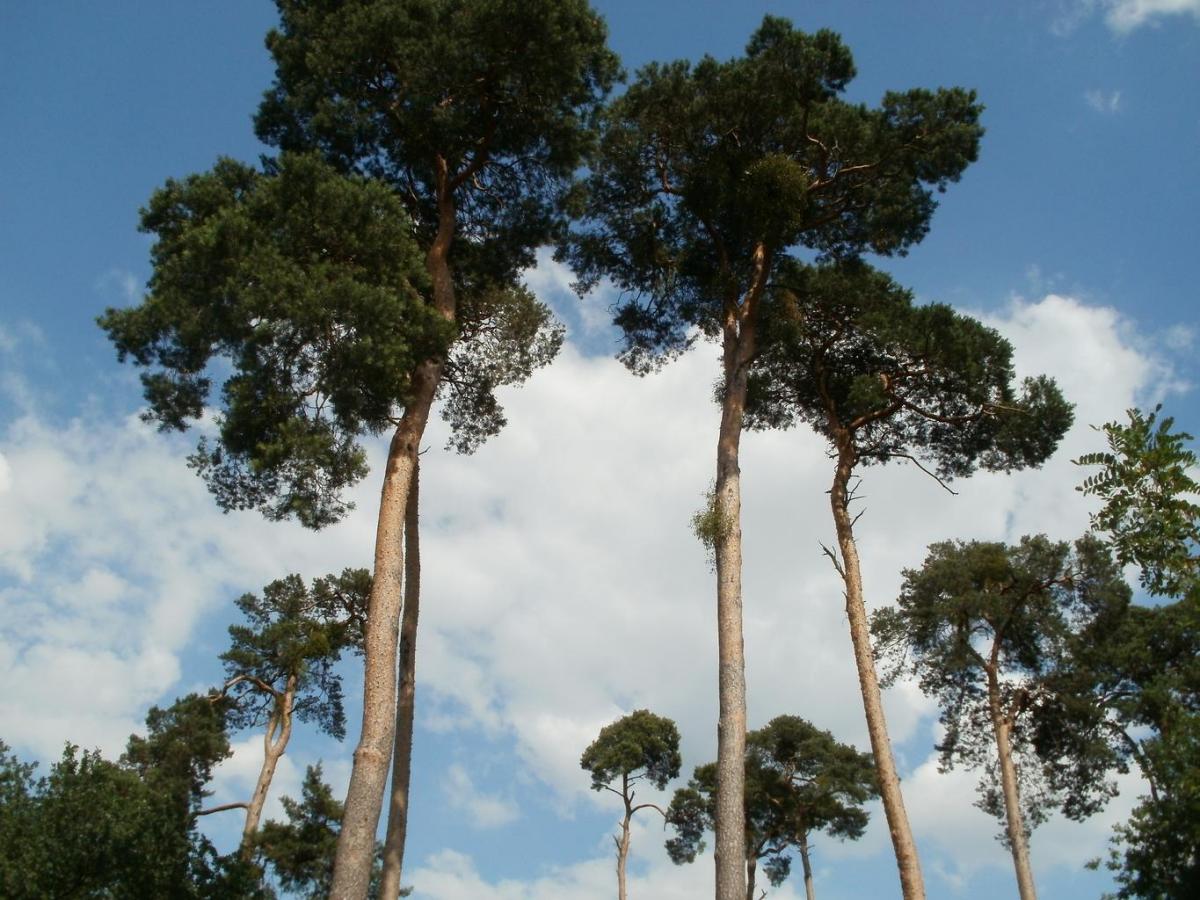
El Scots pine It is a conifer that reaches a height of 30 meters. It is a type of pine that grows practically throughout Europe. The trunk is thick, measuring about 5 meters in circumference, with a reddish-orange bark. The leaves are acicular, and are between 3 and 7 centimeters long.
Pinus strobus
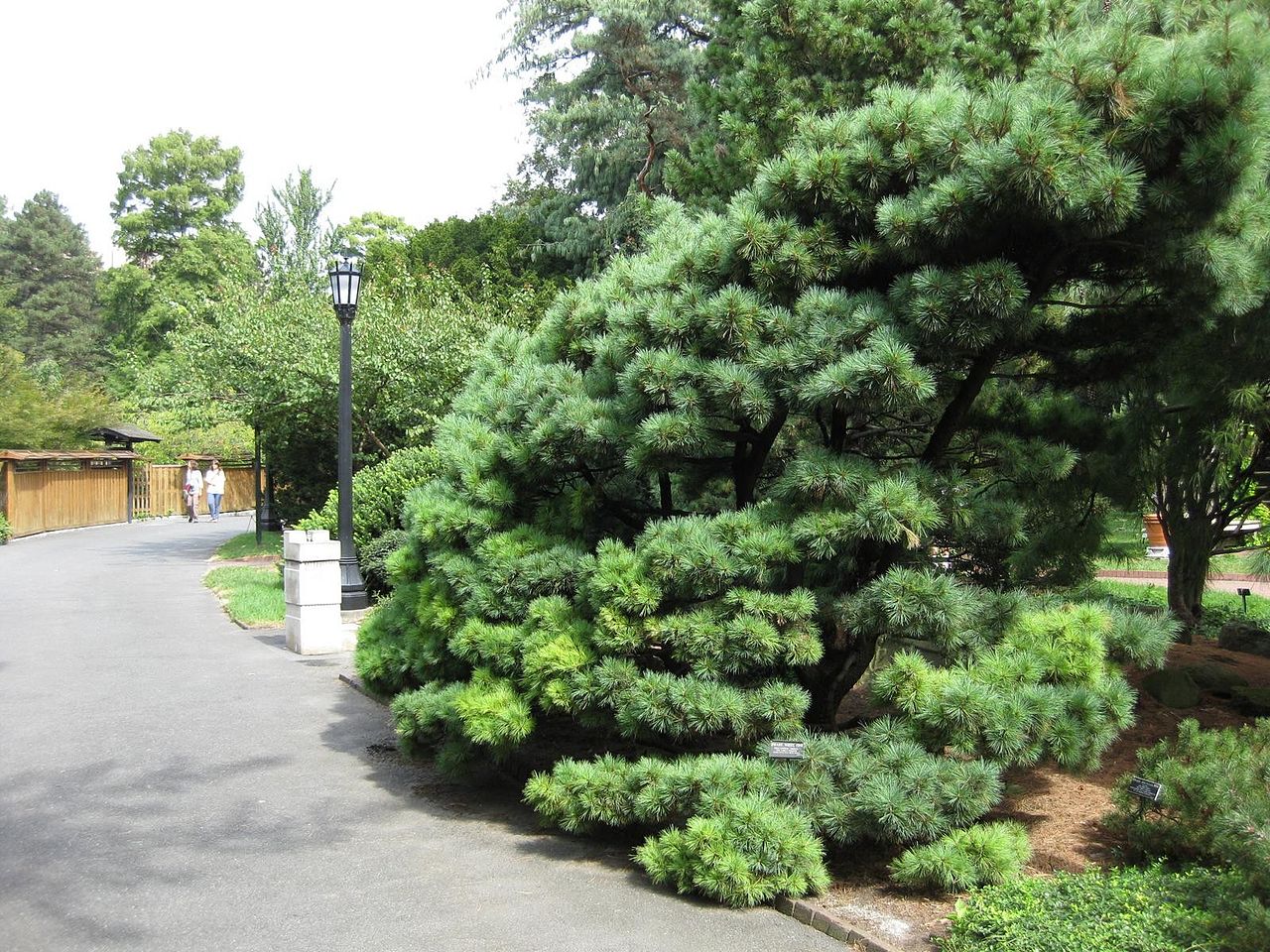
Image - Wikimedia / Raffi Kojian
The Canadian pine, also known as American white pine or strobe pine, is a conifer native to eastern North America. Reaches 40 meters in height, and its trunk thickens up to 1,5 meters in diameter. Their needles are long, between 6 and 12 centimeters.
Pinus thunbergii
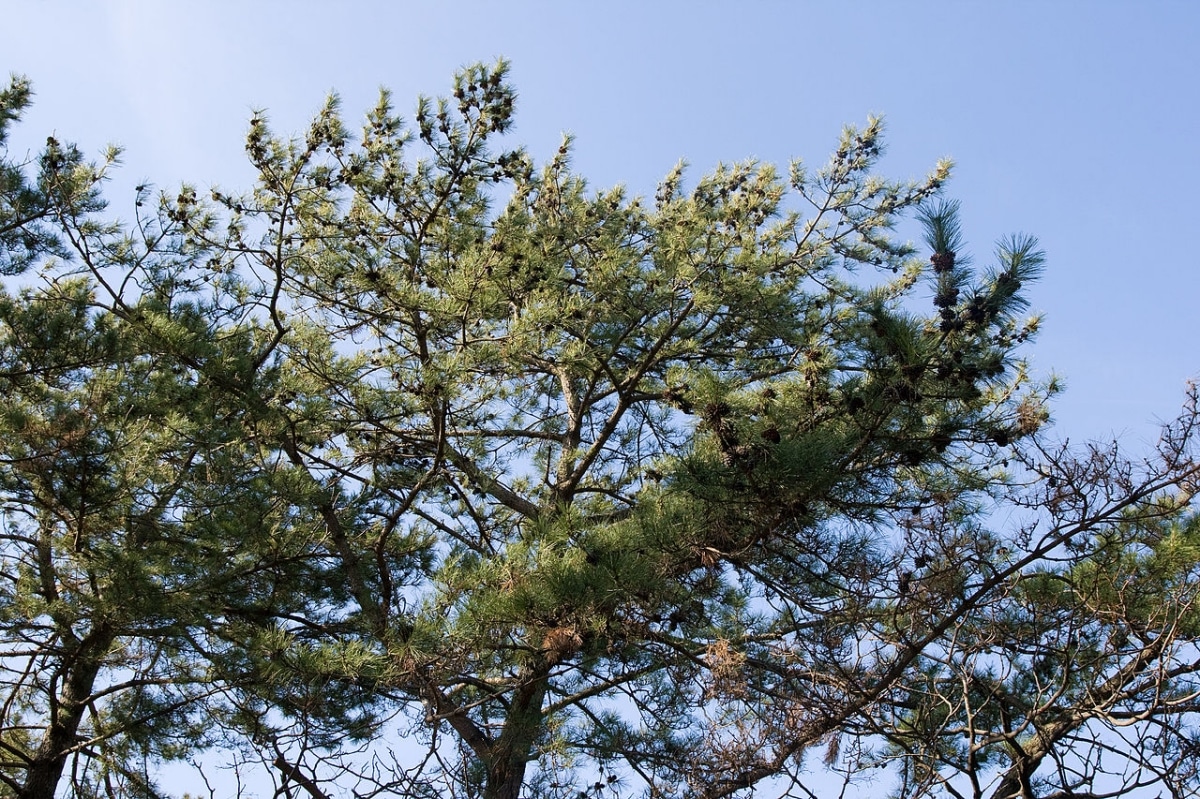
Image - Wikimedia / Σ64
The Japanese Thunberg pine is a plant native to Japan. Reaches 40 meters in height, although when it is cultivated it is rare that it exceeds 15 meters. The leaves are acicular, and measure between 7 and 12 centimeters.
Which of these types of pines did you like the most? If you are thinking of planting a pine tree, here is a selection of seeds with some of the variants that we have mentioned in this article.



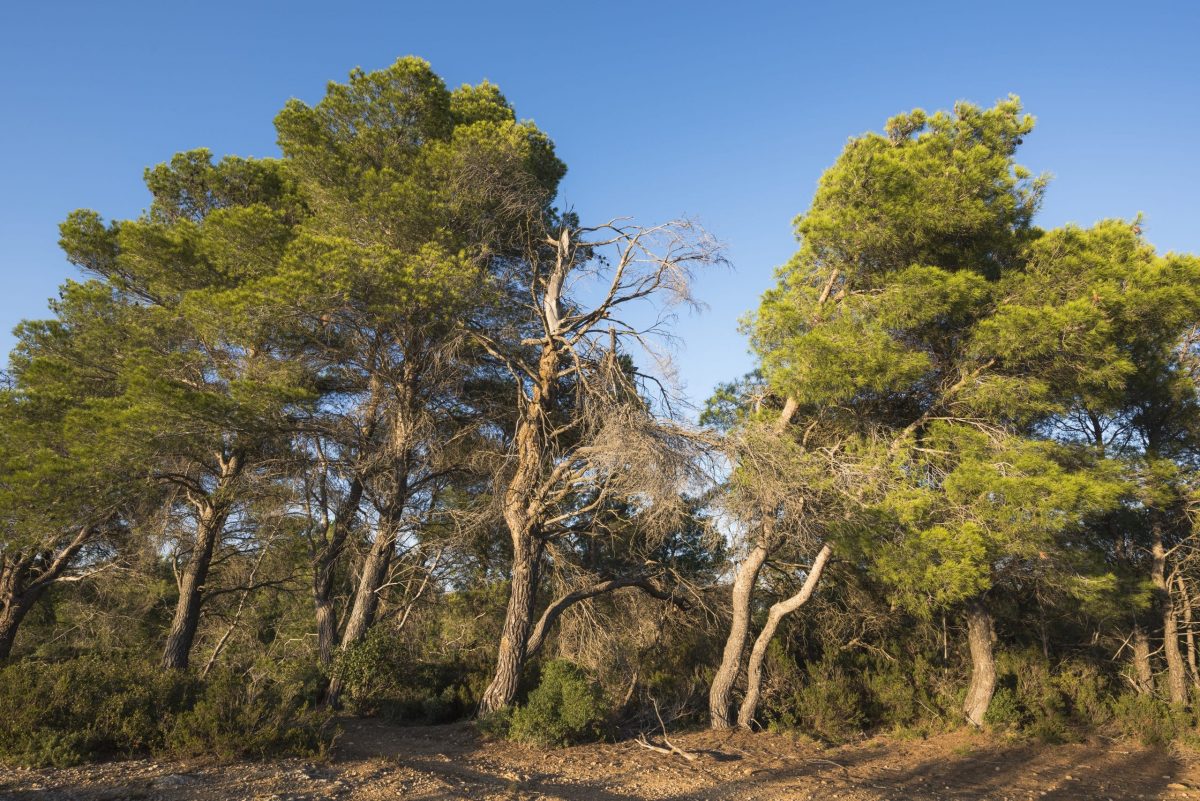
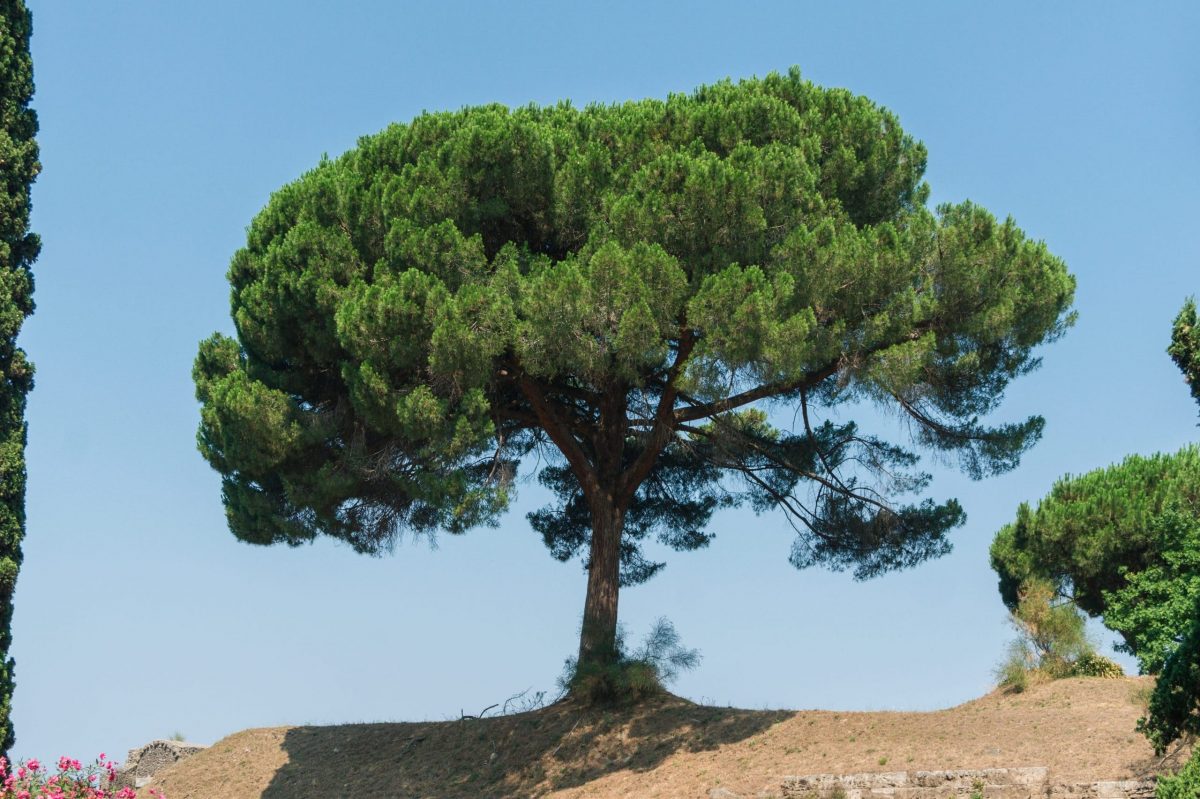
Hola!
I have an Oregon pine about 50 years old in the front garden and it has all its branches dry, these last months it has been drying up.
I don't want to take it out, can it be recovered?
Hi Yolanda.
Can you send us a photo to our Facebook? In any case, it is very very difficult to recover a pine that has lost all its leaves 🙁
You can water it with a biostimulant, which you will find for sale in nurseries. But what is most urgent is to treat it with a fungicide for conifers, since it may have the disease known as browning of conifers.
Greetings.